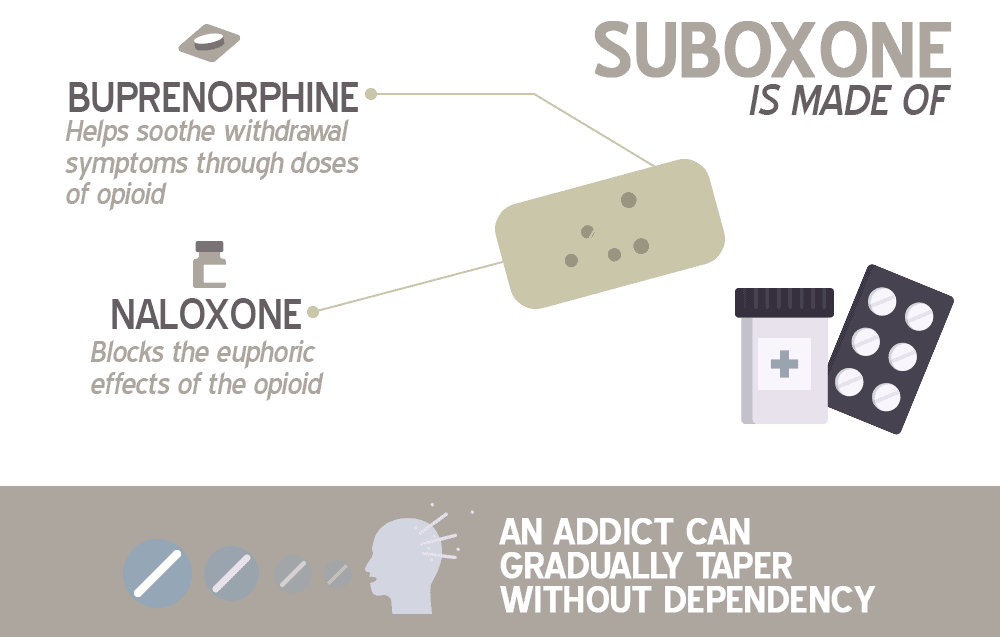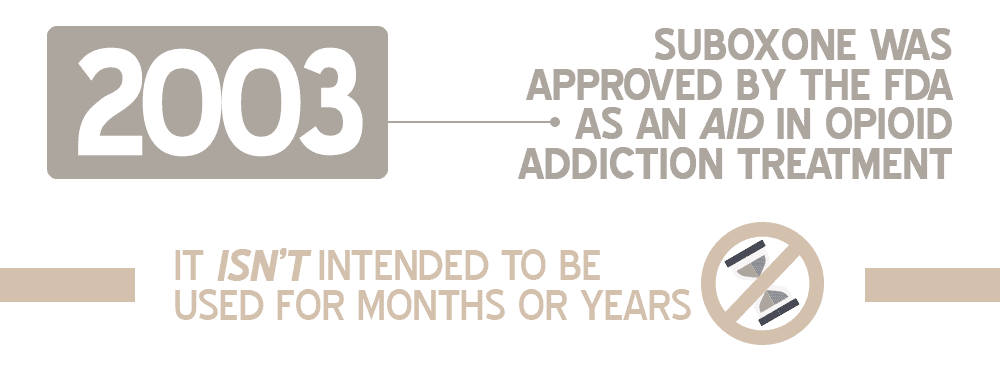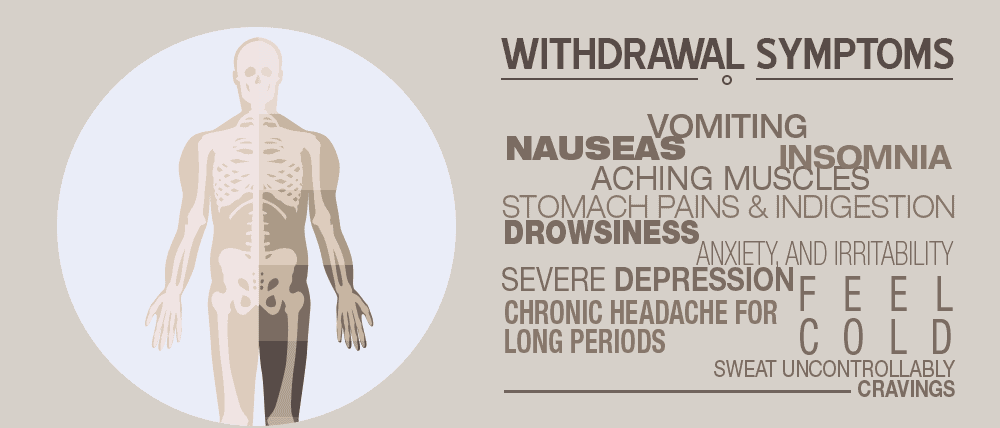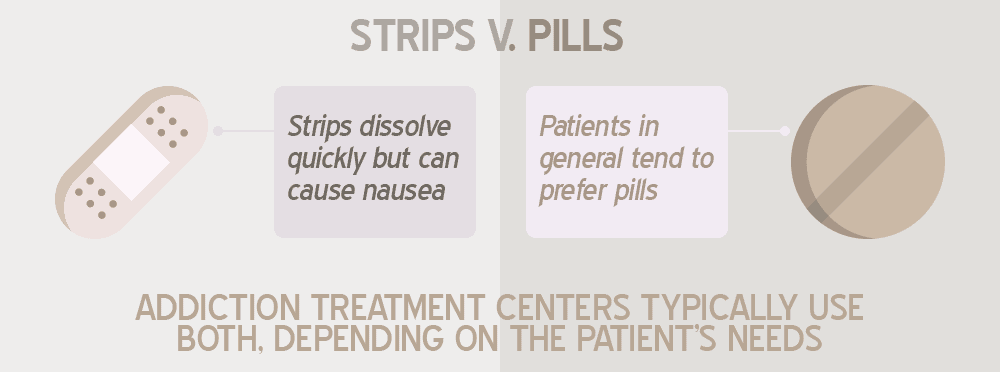The statistics tell the tale when it comes to opioid addiction in the U.S. In the U.S. alone, there are 2 million people that experienced substance abuse problems related to opioid prescription pain killers.
Why Suboxone is Relevant When Referring to Addiction
As of 2015, there were 591,000 people with a heroin addiction. Drug overdose is the leading cause of accidental death and it’s the opioid addiction that’s the culprit. Admission into treatment centers have increased as people try to abstain from deadly addictions.
“Statistics show that recovering opioid addicts stay clean longer when there’s continued care and support. Learn about our Outpatient Addiction Recovery program.”
Through the past century, opioid drugs have been used to stop different opioid addictions. For example, methadone was used to help heroin addicts abstain from using. This has only proved that this is a dangerous cycle which will circle around itself over-and-over. Suboxone is different, though it still need to be managed properly. It is giving the medical industry and population some hope that they can fight the opioid epidemic, and win.
How Suboxone Treatment Can Help You Recover From Opioid Addiction in a Safer Way
Like any medical maintenance drug, Suboxone should be administered with a start-to-finish plan. While Suboxone is less dangerous than methadone, people can experience a dependency.  Suboxone has been administered to millions of people because it is an effective part of any addiction treatment plan. It is comprised of buprenorphine and naloxone. They work together to help an addict detox from stronger opioids. Buprenorphine gives a patient opioid doses that prevent major withdrawal symptoms. Nalaxone ensures that the person doesn’t feel the euphoric effects of the opioid. Naloxone is an opioid antagonist that doesn’t allow the patient to get the desired feeling they’re after. How exactly? The opioid high is blocked from reaching the brain. It is the lack of Suboxone high that makes it different from other opioid treatment medications. The theory, which proves to be working, is a person can gradually taper without dependency on Suboxone. They will also feel less inclined to use the original drug they were addicted to such as heroin or opioid pain killers.
Suboxone has been administered to millions of people because it is an effective part of any addiction treatment plan. It is comprised of buprenorphine and naloxone. They work together to help an addict detox from stronger opioids. Buprenorphine gives a patient opioid doses that prevent major withdrawal symptoms. Nalaxone ensures that the person doesn’t feel the euphoric effects of the opioid. Naloxone is an opioid antagonist that doesn’t allow the patient to get the desired feeling they’re after. How exactly? The opioid high is blocked from reaching the brain. It is the lack of Suboxone high that makes it different from other opioid treatment medications. The theory, which proves to be working, is a person can gradually taper without dependency on Suboxone. They will also feel less inclined to use the original drug they were addicted to such as heroin or opioid pain killers.
“Get the help you need today. We offer outpatient assistance, so you can maintain your work, family, and life commitments while getting the help you deserve!”
Suboxone Should be a Solution, Not a Problem
Suboxone shouldn’t become a problem as a maintenance drug to abstain from dangerous opioids. How it’s prescribed may be an issue however.  Suboxone was FDA approved in 2003 to help people initially get off strong opiates. It wasn’t meant to be used for months and years. This is not what the FDA had in mind. Yet, this is what doctors are doing. Yes, Suboxone treatment works but there is more that needs to coincide with the treatment. This includes holistic healing like yoga and meditation. It includes talking to people about why they started abusing opioids in the first place. Know this, even the intense withdrawal of heroin lasts for about two weeks. After that, the addiction has a lot more to do with mental dependency than physical. Suboxone strips and pills have their place. They just shouldn’t become another opioid an addict depend on.
Suboxone was FDA approved in 2003 to help people initially get off strong opiates. It wasn’t meant to be used for months and years. This is not what the FDA had in mind. Yet, this is what doctors are doing. Yes, Suboxone treatment works but there is more that needs to coincide with the treatment. This includes holistic healing like yoga and meditation. It includes talking to people about why they started abusing opioids in the first place. Know this, even the intense withdrawal of heroin lasts for about two weeks. After that, the addiction has a lot more to do with mental dependency than physical. Suboxone strips and pills have their place. They just shouldn’t become another opioid an addict depend on.
A Comparison Between Suboxone Strips or Pills
Suboxone pills were the first to be distributed for opioid addiction. Then came Suboxone strips in 2011. Addiction treatment centers will often use both, depending on what the patients’ needs are. A randomized study found that the suboxone pills and film are equally as effective. Suboxone film may be more effective because it takes less time to dissolve into your system. Some patients claim the tablets work better and that the Suboxone strips cause nausea. Patients may try to abuse whatever Suboxone they can get their hands on, keeping in mind that addiction is a disease. Some people will dissolve strips in water and inject it. You can’t snort it however. Snorting the pills for a Suboxone high can be quite common. Addiction specialists believe that patients who are left unattended with their Suboxone management may abuse them.
Why Did They Create Strips if There Was Already a Suboxone Pill?
When Suboxone is administered properly, it can be very effective. When Columbia University launched a suboxone-based addiction treatment program in 2003, they saw an 88% success rate. Suboxone treatment is highly effective and much less risky than the equally effective methadone. So the pharmaceutical companies have moved forward in faith that Suboxone will be around for a while. Suboxone strips were designed to make it more convenient for a patient to take their doses. Here are some of the benefits that outweigh the original Subxone pill.
- Each strip is wrapped individually protecting it from bacteria or other types of contamination.
- Subxone strips dissolve more quickly so there’s less Nalaxone taste in your saliva. The pills tastes terrible. Patients are supposed to dissolve under the tongue for proper absorption.
- The strips are often cheaper because the manufacturer will give out coupons.
- Subxone strips have a less powerful taste which is to their benefit.
- The film is also easy to discreetly carry in a wallet as opposed to carrying around a pill bottle.
Suboxone Treatment Doctors
Doctors are only supposed to be allowed to prescribe opioid drugs if they’re doing so in an addiction treatment center. They are supposed to have special permission from authorities in their state. Back in 2000, a law was passed. It allowed physicians to apply for special permission to prescribe opioid medications. The FDA said yes to Suboxone. These Suboxone doctors know what they should be prescribing to patients. They are given an eight hour training course. They will learn more about the nature of the opioid addiction. They also learn about Suboxone treatment so they can align their prescription. So if it’s not the doctors that are uneducated as often suggested in mainstream media, how are people getting dependent on Suboxone?
“We treat both addiction and co-occurring disorders and accept many health insurance plans. Take a look at our outpatient program today!”
Think of Suboxone Treatment as Part of Your Recovery, Not the Answer to Your Prayers
Suboxone treatment is a way of regulating brain chemistry. This is beneficial when detoxing from drugs like heroin or OxyContin. When it’s used daily, addicts may become dependent on the feeling Suboxone offers. Addicts don’t get the euphoric feelings like they do with other opioids. They just don’t experience the withdrawal symptoms. The problem is, they’re not really getting to the fundamental reasons they started using in the first place. To get to the heart of the problem, they do need to regulate their brain chemistry past medication. This can be as simple as going for along walk every day, which has proven to help with depression. Many addicts dedicated to their recovery will also get into the discipline of meditation.
Suboxone Strips/Pills Side Effects
Suboxone may be safer than methadone as an opioid addiction maintenance drug. This doesn’t mean that it doesn’t come with its own health risks. Here are some side effects that people may experience when using Subxone strips.
- Problem with their respiratory system.
- Risk of death is higher when they combine with alcohol or drugs like benzodiazepines.
- They may feel sleepy or dizzy.
- They may experience problems with coordination.
- They may become dependent on them.
- They can potentially experience liver problems.
- Decrease in blood pressure.
As Suboxone strips are used for overcoming opioid addiction, they may experience opioid withdrawal. The potential is there that the drug doesn’t work the way it should for the patient. Addicts shouldn’t stop using the film on their own without consulting a doctor. 
What To Expect When Going Through Suboxone Withdrawal
A Suboxone doctor is going to suggest that the person slowly tapers off using the drug. This is because they’ll feel as though they quit the original drug they were using if they quit ‘cold turkey’. Without tapering, that strong heroin or methadone withdrawal will rush back in. The danger lies in relapse. The addict may use as much heroin as they did the last time they used. They will have lost their tolerance for it. This is where addicts are more susceptible to overdose. Some common Suboxone withdrawal symptoms include:
- Vomiting.
- Nauseas.
- Aching muscles.
- Inability to sleep.
- Stomach pains and indigestion.
- Feelings of drowsiness.
- Mood swings like depression, anxiety, and irritability.
- Cravings.
- A fever.
- They may feel cold.
- They may sweat uncontrollably.
- They may have a chronic headache for long periods.
The length of time an addict will experience Suboxone withdrawal will greatly depend on how long they were on it. The physical withdrawal should last up to a month. The psychological dependence may stay with the person for longer. If they’re planning to abstain from Suboxone immediately, it’s to go through medical detox. The Suboxone withdrawal can be overwhelming for the first few days. It’s a personal choice whether a person uses suboxone strips or pills to recover from their opioid addiction. If they’re serious about their own recovery, they should always keep in mind that Suboxone treatment is temporary. They will also have to commit to the work they need to do for themselves. There are methods put in place to help the person work through whatever resentment they might be feeling. The support is always there, whether through 12-step groups or individual therapy. Suboxone is a great beginning to recovery but shouldn’t be depended on for long-term healing. Remember that Suboxone treatment without any holistic treatment is just trading one addiction for another. If a person really wants to beat out opiates from their life, the journey goes beyond the withdrawal phase.
What Did you Think About This Blog?
Give it a Rating!
Full Infographic:
 NCBI, Addiction, PMC (Feb. 2009) Buprenorphine tapering schedule and illicit opioid use. Retrieved from, https://www.ncbi.nlm.nih.gov/pmc/articles/PMC3150159/ NCBI, J Addict Res Therapy (Nov. 2013) Withdrawal from Buprenorphine/Naloxone and Maintenance with a Natural Dopaminergic Agonist: A Cautionary Note. Retrieved from, https://www.ncbi.nlm.nih.gov/pmc/articles/PMC3835595/ NCBI, PubMed (Oct. 2015) Effects of a higher-bioavailability buprenorphine/naloxone sublingual tablet versus buprenorphine/naloxone film for the treatment of opioid dependence during induction and stabilization: a multicenter, randomized trial. Retrieved from, https://www.ncbi.nlm.nih.gov/pubmed/26412801
NCBI, Addiction, PMC (Feb. 2009) Buprenorphine tapering schedule and illicit opioid use. Retrieved from, https://www.ncbi.nlm.nih.gov/pmc/articles/PMC3150159/ NCBI, J Addict Res Therapy (Nov. 2013) Withdrawal from Buprenorphine/Naloxone and Maintenance with a Natural Dopaminergic Agonist: A Cautionary Note. Retrieved from, https://www.ncbi.nlm.nih.gov/pmc/articles/PMC3835595/ NCBI, PubMed (Oct. 2015) Effects of a higher-bioavailability buprenorphine/naloxone sublingual tablet versus buprenorphine/naloxone film for the treatment of opioid dependence during induction and stabilization: a multicenter, randomized trial. Retrieved from, https://www.ncbi.nlm.nih.gov/pubmed/26412801



